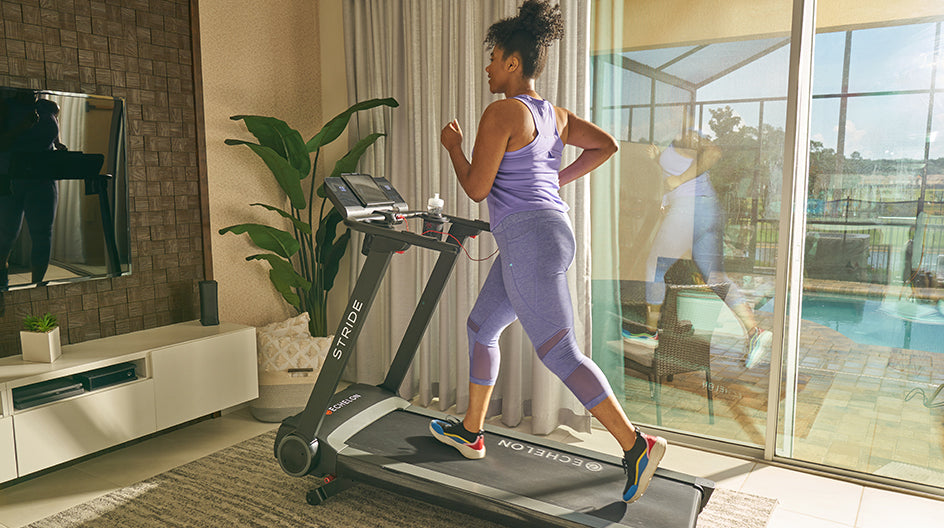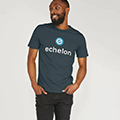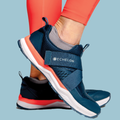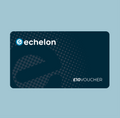Festive Deals Live Now! | Last order dates for guaranteed Christmas delivery Mainland UK 18th December at 2pm
-
Festive Deals
-
Equipment
-
Membership
-
Merchandise
-
30-Day Home Trial
-
Why Choose Us?
-
Your Safety Matters
-
News
-
Gift Vouchers
-
Echelon Commercial
-
Member Login
-
Store Login
Connect Rowers
Strength Training
Smart Fitness Mirror
Stair Climber
Festive Deals Live Now! | Last order dates for guaranteed Christmas delivery Mainland UK 18th December at 2pm

Smart Bikes

Smart Treadmills

Smart Rowers

Stair Climber

Smart Fitness Mirror

Strength Home
NEW!

Exercise Bench
NEW!

Adjustable Dumbbells
NEW!
SMART HOME ROWERS
Why choose Echelon?REFLECT FITNESS MIRROR
Why Choose Echelon?The Benefits of Cycling

7 min read
Cycling is one of the most popular forms of cardiovascular exercise that delivers a myriad of physical and mental health benefits. Outdoors, cycling is used as a popular mode of transport, a health-promoting leisure activity, and is also a fully professional sport. Indoors, cycling is performed in gyms, indoor cycling studios, and more recently in the home, especially with the rise in popularity of smart and connected bikes and online cycling classes.
To illustrate just how popular cycling is, according to data published by Statista, around 22 million bikes are sold annually in the EU and over 3 million bikes per year are sold in the UK.
Cardiovascular Benefits of Cycling
Cycling is primarily classified as a form of cardiovascular (or aerobic endurance) exercise, that predominantly uses the muscles in the lower body to power the pedals, while the core and upper body play more of a stabilising role.
Like other forms of cardiovascular exercise, the heart, lungs, and wider circulatory system are challenged as they are forced to deliver more oxygen and nutrient-rich blood to the active muscles so that they can continue to function at a high level and for prolonged periods of time. With repeated cycling sessions, the cardiovascular system adapts to become much more efficient, resulting in a range of physiological benefits, including:
- Thicker and stronger heart muscle, especially on the left side (left ventricular hypertrophy).
- More forceful contraction of the heart, increasing the amount of blood pumped per beat (stroke volume).
- Lower resting heart rates – with a stronger contraction, the heart doesn’t need to beat as often.
- Lower resting blood pressure.
- Greater network of capillaries in the lungs and muscles – this increases the ability for the cardiovascular system to transport oxygen and remove waste products (e.g., lactic acid).
- Increased aerobic capacity – also known as VO 2 Max, this is the measure of cardiovascular efficiency and measures how much oxygen a person can take in, deliver, and use. Elite-level cyclists have come of the highest VO2 max scores of all athletes.
Muscular Benefits of Cycling
Cycling is an endurance activity that challenges the lower body musculature in its capacity to continually contract over extended periods of time. Under higher loads/resistances, cycling can develop power-endurance, which is the ability of the muscles to sustain higher levels of force output for longer periods of time. When cycling outdoors, this simulates a mountain or hill climb. Under lower or more moderate loads/resistances, cycling is typically performed at higher speeds for prolonged periods, which develops speed-endurance. This typically simulates cycling on a flat or downhill when outdoors.
Both indoor and outdoor cycling result in a range of physiological adaptations that ultimately increase the ability of the active muscles (discussed next) to continue generating force to power the pedal strokes. These adaptations include:
- Increased network of capillaries – this allows more oxygen and nutrients (glucose, fat, and protein when glucose levels are low) to be delivered to the muscles and more waste (lactic acid and hydrogen ions) to be removed from the muscle environment.
- Increased lactate threshold – lactic acid is the metabolic by-product of high-intensity exercise (anaerobic) and its acidity interferes with the muscles ability to release energy via normal channels. With increased exposure to lactic acid (from repeated bouts of cycling), the muscles become more efficient at removing and buffering (neutralising) the effects of the lactic acid, delaying fatigue and increasing cycling capacity.
- Greater mitochondrial density – mitochondria are the oxygen power house of the muscle where all aerobic energy is generated. These tiny cells sit around the enduring muscle fibres (slow-twitch, or type 1) and supply them with the energy they need to create powerful and sustained contractions. With repeated cycling at appropriate intensity, muscles develop a greater density of these powerhouses, and the existing mitochondria also increase in size.
- Fast-twitch fibre transition – broadly speaking, muscles are composed of slow and fast-twitch muscle fibres, although there are intermittent fibres that support true fast twitch or slow-twitch fibres (type IIa, or fast oxidative glycolytic). Endurance activities like cycling rely predominantly on slow-twitch muscle fibres and with repeated cycling training, those intermediate fibres start to transition, supporting the slow-twitch fibres in their role of creating enduring and fatigue-resistant contractions.
Muscles Used in Cycling
Cycling involves all the major muscles in the body, although it’s important to underline that not all the muscles are loaded in exactly the same way. Cycling is a lower-body dominant exercise that activates the quadriceps, hamstrings, glutes and calves (see below for more detail) to power the pedal strokes.
The muscles in the arms and shoulders contract statically (isometrically) in order to provide stability for the upper body. Similarly, the core muscles (deep and superficial) also contract statically to connect the upper and lower body, creating stable platform for the lower bod muscles to generate force.
Good levels of core stability are important in cycling because the core is the foundation of the lower-body cycling action. If the core muscles are weak, instability and compensatory movements (e.g. pelvic rocking side-to-side) will occur, which will reduce the force produced by the lower body and will almost certainly increase the risk of lower-back pain and/or muscle strains in the muscles attaching to the pelvis (hamstrings and quadriceps). A good stability programme must therefore always be a stable of any conditioning programme for cyclists.
The lower-body muscles primarily contract in the following way to power the pedal stroke:
- Glutes – the large gluteus maximus muscle on the back of the hip works to extend the hip on the downward phase of the pedal stroke. The smaller glute muscles on the outer side of the hip serve to stabilise the hip and prevent unwanted movements.
- Quadriceps- the quadriceps serve to extend the knee on the downward phase of the pedal stroke, although one of the four quadricep muscles (rectus femoris) also acts as a hip flexor, helping to lift the lower leg on the upward stage of the pedal stroke.
- Hamstrings – these muscles are situated on the rear of the upper leg and serve to extend the hip (supporting the glutes) during the downward phase of the pedal stroke. These also serve to flex (bend) the knee during the upward stage of the pedal stroke on the opposite leg.
- Calves – the calves are made up of two muscles, gastrocnemius, and soleus. Collectively, these muscles serve to point the toes, which in cycling isn’t really a major movement because the foot will generally remain relatively flat. As such, the gastrocnemius and soleus contract in more of a static/isometric fashion to give tremendous stability and stiffness at the alike. The gastrocnemius does cross the knee, so it supports with knee flexion during the upward stage of the pedal stroke.
Two other important features about the cycling action and muscles pertain to the tibialis anterior and the gastrocnemius muscle:
Firstly, the tibialis anterior sits on the front of the shin bone (tibia) and serves to stabilise the ankle with the calves. However, it also actively pulls the toes back, which is an important feature of the upward pedal stroke when cyclists are wearing cleats or toe clips.
Secondly, the gastrocnemius muscle is often referred to as the ‘second heart’ because it plays a crucial role in actively pumping blood back uphill (against gravity) towards the heart and lungs for re-oxygenation. This muscle actively massages blood in the veins, driving it back towards the heart and lungs. When during the cycling action when this muscle is active, it plays a crucial role in creating a highly efficient cardiovascular system.
We understand that much of the information presented in this muscles section is a little technical for the average recreational cyclist. However, if you do take your cycling seriously, understanding how muscles function to drive your cycling action can be invaluable, both from a performance and injury prevention standpoint. If you wanted to learn more in this area, most personal training courses provide lots of education, training and support on subjects just like this.
Wider Health and Wellbeing Benefits of Cycling
Cycling, whether performed indoors or outdoors, offers a wide-range of benefits to an individual’s health and wellbeing, physically and mentally. While some of these wider health benefits are featured below, this range if far from exhaustive:
- Greater energy expenditure – reducing the risk of being overweight or obese.
- Greater cardiovascular efficiency – reducing the risk of heart disease, high blood pressure, strokes, and other conditions associated with cardiovascular deficiency.
- Increased lung efficiency – a stronger respiratory system reduces the risk of long-term conditions associated with the lungs, including asthma and COPD (chronic obstructive pulmonary disorder).
- Stronger bones and joints – cycling is a low-impact exercise (which translates to less stress on the bones/joints) that helps to strengthen the bones in the lower body, reducing the future risk of osteoporosis – this is especially important in women. Additionally, connective tissues in the active joints also strength, creating more stability and reducing the risk of osteoarthritis and other joint-related disorders.
- Greater energy levels – cycling is an aerobic exercise that supports good weight management. With higher levels of oxygen in the body, and/or lower bodyweights, individuals who cycle regularly are likely to benefit from greater energy levels.
- Greater immunity from illness – regular exercise helps to create a host of health-promoting adaptations that make the body more resistant to the effects of viruses and infections. Exercise results in a greater concentration of white blood cells and antibodies, which are used to fight off any infection.
- Improved mental health and wellbeing – As with other forms of exercise, cycling helps to promote the release of endorphins, which raise mood and help to lower acute levels of stress or anxiety. Research in this area has also found that those who cycle have much lower levels of stress when compared to those who do not.
Cycle With Echelon
Throughout this article we have explored some of the broader benefits of cycling and have attempted to simplify some of the scientific language, to make the content more palatable and easier to understand. This information presented in this article is supported by the science, and is representative of the type of content that those completing an indoor cycling instructor course would learn throughout their qualification. This information is supported by the science and has been written by a leading subject specialist in this field.
If you are interested in starting a regular programme of indoor cycling, we can certainly help. Here at Echelon, we have a wide-range of smart exercise bikes that are specifically designed to help you to get your health, fitness, and wellbeing goals on track. Discover how you can start your fitness cycling programme from the comfort of your own home with the Echelon Community.

Why Echelon is Different
See why we are the most affordable and best value at home fitness on the market.
Related Posts
Your Cart
There is currently no items in the cart.
See our best deals


















